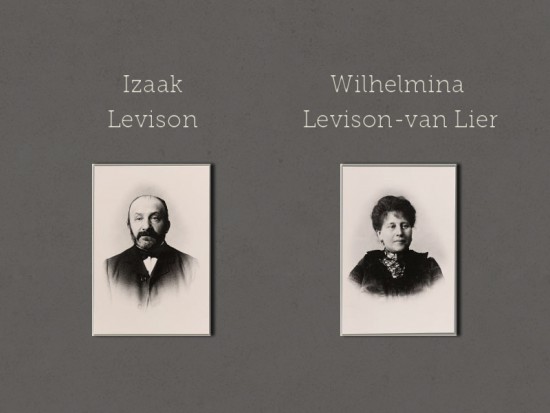
If somebody had told my greatgrandparents from my mothers side, Izaak Levison (born in 1850) and Wilhelmina Levison-van Lier (born in 1849) who lived here in Amterdam opposite this building of the KNAW, the Royal Academy of Sciences (at the Kloveniersburgwal 29) that one their greatgrandchild would celebrate his jubileum at the Royal Academy, they would not have believed it. They lived at the opposite side of this canal (Kloveniersburgwal 22-24) where they owned a haberdasher’s shop. But it was not these ancesters who came to mind when Dr. Coby de Graaf of the Children’s Rights Center Amsterdam (CCRA) proposed the Conference in my honour and the location here at the KNAW.
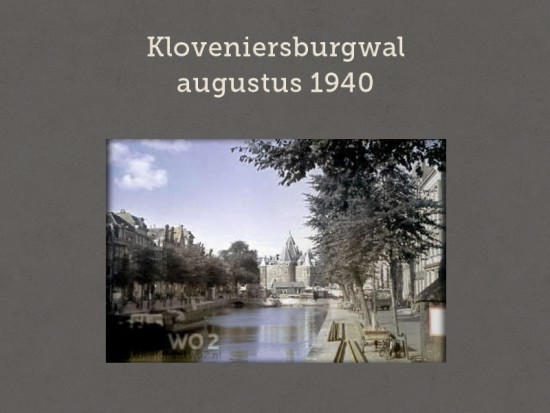
No, a quote of the philosopher Soren Kirkegaard came to mind: “human beings suffer from the lapse of time”, he said. I have been born after the Second World War in 1948, but nevertheless the photo’s came to mind of the ‘Niewmarkt’-square, 20 meters to the right from the KNAW buidling where in 1941 till the end of the Second World War the ”Jewish Quarter” was located, clearly marked by signs and barbed wire. That the place where we are today for my jubileum, is so close to the hart of the persecution to the Jews in the Netherlands triggered to make this speech personal.
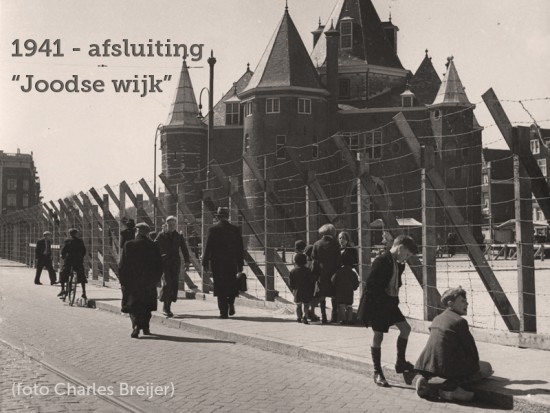
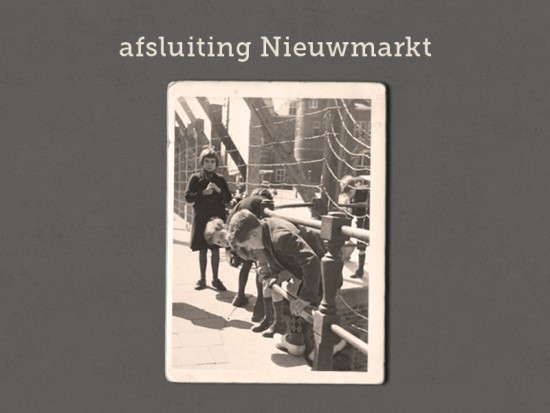
The fact that I can tell my personal story here gives me satisfaction. Because it was not intended by the nazi’s that about 70 years after the Second Wold War a Jewish Dutchman would be able to tell his story, so closely connected with discrimination and murder (about 200 of my familymembers from my father’s and mother’s side were deported and were killed).
I could show you more pictures for instance of my uncle Alfred Philip, who studied law in Amstetrdam and became a lawyer and was an officer in the Dutch army when the war started. With his cousin Robby Philip he tried to make a crossing to England, was arrested at the beach in Noordwijk and send to Auschwitz where he was killed on 31 January 1943.
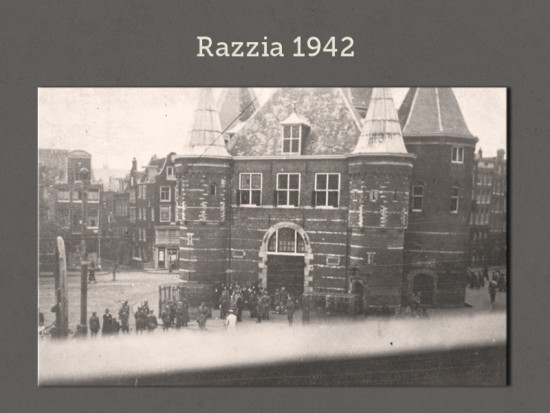
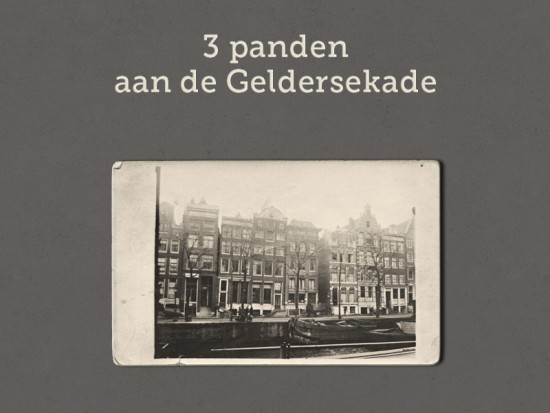
That my family could start again in 1945 showed that they had great resilience. My father especially had this vitality. In the beginning of the war he found his way to Switzerland to be safe there, but was recruited there to work for the Dutch-Paris escape line. He brought many to safety to Switzerland or Spain, among others the editor of the underground newspaper Het Parool, Gert van Heuven Goedhart, who became the Minister of Justice in London of the Dutch government on exile.
The injuctice caused to my family and other Jewish citizens in the Netherlands and the courage my father (who was arrested in the end by the Gestapo) contributed to my choice to dedicate my professional life to the rights of the child. Strange was it to experience that when I was in the middle of the civil war on a working-visit in Sierra Leone it felt like I was familiar with such a situation.
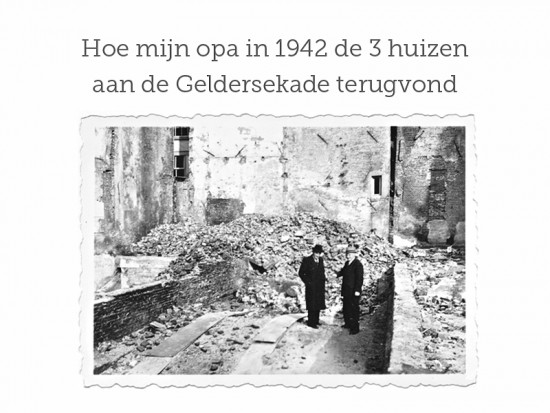
The three canalhouses in ruines
If you walk around the corner of this KNAW (the Royal Academy) building, and then turn left (a 5 minutes walk) you are on “the good side of the Geldersekade” as my father used to say (the other side of that canal was the red light district) where the three canalhouses used to be in which my family’s wholesale in textiles used to be. The business (Drukker &Co) had been taken over in the war by a German caretaker (Verwalter) and my grandfather and father found the three canalhouses back in ruins.
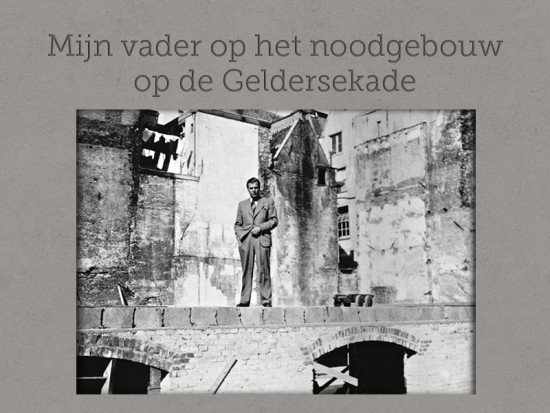
On the pictures you see my grandfather and father in the rubble which used to be their business. They obtained after the war permission to build a temporary structure and this building is still standing today. They rebuild the business and they reopened. Here you see me on the lap of my grandmother Regina in this rebuild office at the Geldersekade.
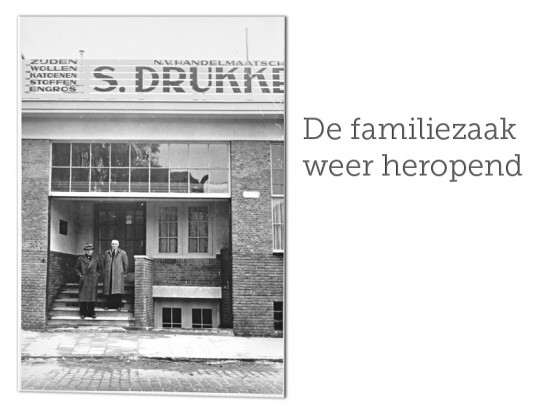
The business reopened!
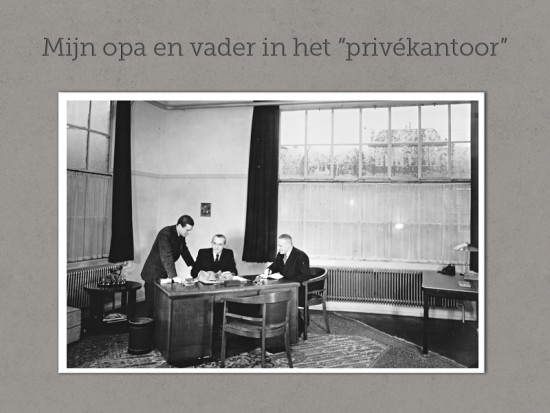
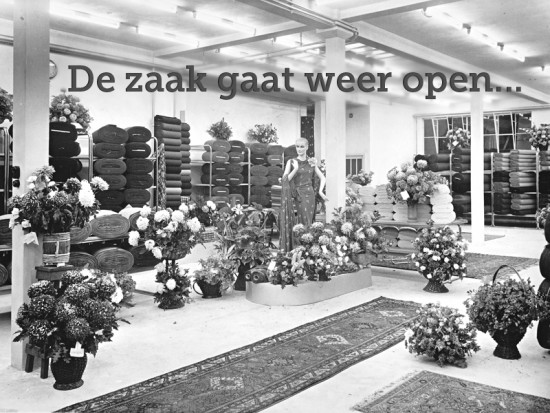
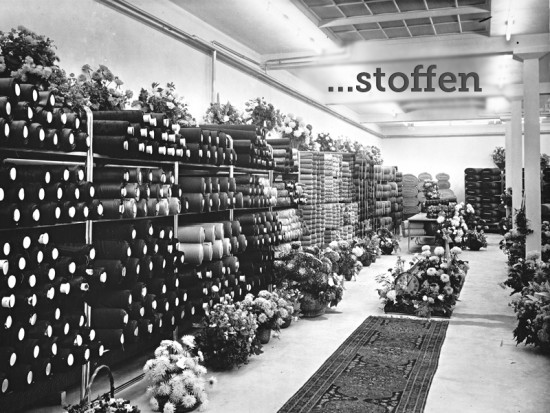
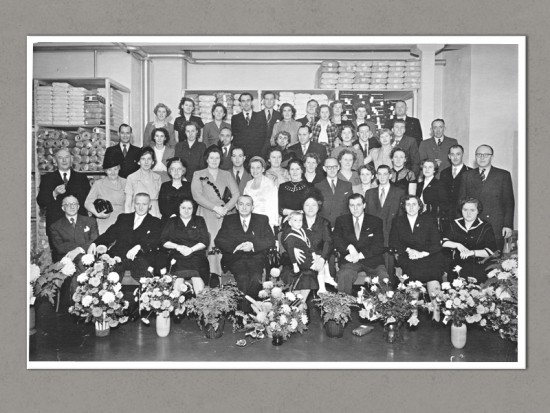
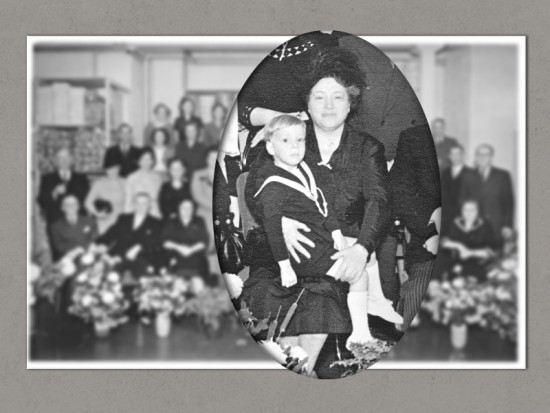
With such a background I know a few things about transgenerational transmission of the results of persecution. Fear for persecution can be transmitted, I did noty only read about it in the literature. So I support the approach by of Prof. Michel Freeman (‘fearful cultutral practices’, see elsewhere on this website) who stated that male curcumcision can be defended, female circumcision can not. From my own experience I know how important male curcumcision is and how strongly connected with the right to identity. Because of the fear that the Germans would come again my mother did not want that I would be circumsized. When I was 22 years old I had this done at the Jewish Hospital (CIZ) in Amsterdam. “We did this to save your life” my mother said when she heard about my plans. From her experience being directed by fears was very understandable. I am very grateful to Michael Freeman (who shared with you in his speech that he has Parkinson and is already on the way back to Heathrow) for having come especially from London even now travel is not easy and being already for more than 20 years the editor in chief if the International Journal of Children’s Rights. I have taken the initiative to this Journal but Michael has upheld the standards of the academic journal very high and from this point of view it could not have been in better hands.
You will understand that the story of the Polish-Jewish pediatrician Janusz Korczak (who was deported with all children from the Jewish orphanage Dom Sierrot to the Treblinka death camp) moved me enormously. Thanks to reading Korczak I discovered the field of children’s rights. Korczak was a pioneer in chidren’s rights and I wrote about him and founded the Dutch Janusz Korczak Foundation. This ‘Stichting’ became a very active organisation under the leadership of Theo Cappon. I was happy that Dr. Daniel Halperin from the Swiss Janusz Korczak Association spoke here today and that prof. Philip Jaffé also from Geneva was here as well.
I started to be active in the field of child welfare and childcare when I (still a student at the School of Social Work) took the initiative to start some therapeutic family-homes in the Netherlands (based on the model I had seen with Browndale founded by John Brown in Canada). In felt like I was the sorcerer’s aprentice that without much knowledge of childpsychopathology I could convince Miss Terwindt (the head the youthdepartment of the Social Services of the City of Amsterdam) to place children in the new therapeutic families. Soon after the Ministry of Juctice followed and we obtained financial support from the Dutch Stamps of Children Fund headed by Theo Prinsen and from his colleague at the Foundation for the Child (Stichting voor het Kind) who was helpful to get support from the Stamps for Children Fund. Browndale was innovative because at the time emotionally disturbed children were often placed in residential treatment centers as in Rekken or Zetten. Several years later it appeard that the founder in Canada had not told the full story. And that was where Dan Mulock Houwer (who had been the Secretary-General of the World Union of Child Welfare in Geneva, and whose son is today my guest) had tried to warn me for. Anyway I did not have to go anymore to India like psychiatrist Jean Foudraine to find a guru, and in 1972 I left the Browndale ‘movement’ which had (with their small family-like units) also had a lot to offer for children with attachment disorders.
While I worked in Rotterdam at the department for childpsychiatry (with Prof. Jannie Sanders-Woudstra) and getting the therapeutic foster familycare organisation off the ground (whose first director Mr. René de Bot was speaking here today) I started in the evening to do the University study of Orthopedagogics (a Dutch, Belgian and German specialisation in Clinical Child, Family and Education Studies).
I left the work in the hospital in Rotterdam when I could start for the Psychological Special Educational Institute (PPI Amsterdam) to work with school drop-outs and potential school drop-outs. Aftereveral years there Prof. Lea Dasberg invited me to write a doctoral dissertation about Korczak and the rights of the child so I, left for Israel where I could find still some former pupils of his orphanage from the years 1912-1941. I succeded to collect oral history material which contributed to my chapter on Korczak in the dissertation. Seventeen years I stayed in Israel where I founded the Israel in Section of Defence for Children Interational and I felt I could do a lot (we promoted for instance legal representation of young people in the juvenile courts which was innovative because the President of the juvenile courts had allowed it only on a mkidest scale). Legal representation would change the welfare orientation in the courts into an American plea bargening legal model was the fear of the President on the juvenile courts there. In addition we had an effective detention monitoring project and visited regularly jails, prisons and military detention facilities. And we pioneered in the area of civil society joint projects.
When I became the President of Defence for Children Interational (DCI) in Geneva we still had to build booths for interpretors doing simultaneous translations when we had our Council meeting (so that the 10-12 Executive Council members from all parts of the World could understand each other). No wonder the organisation was struggling with its finances. A role which I particularly liked was representing DCI in the Steering Committee against the Use of Child Soldiers now called Child Soldiers International) and participating in meetings organised by UNICEF on the subject in Nairobi. Ambassador Richard Clarke (director of Child Soldiers Interational) spoke about the challenges there still are today.
Over the years I had a lot of support from Dr. Hans van loon (Secretary-General of the Hague Conferece on Private International law, the HCCH) and Prof. Theo van Booven (the former Director of the United Nations Division for Human Rights in Geneva). I was happy that Hans spoke today on the important subject of the link between the Hague Conventions and the Convention on the Rigts of the Child and I was happy that Theo was chairing part of the day.
In 2004 when I came back to the Netherlands I became a health psychologist (’gz-psycholoog’) and my colleague Leo Ligthart, with whom I stayed in contact from Israel, encouraged me to do forensic psychological work for the Dutch courts. Therefore I went to the course of the Netherlands Institute of Forensic Psychiaty and Psychology (NIFP). Since 2004 I am learning every day and every patient is a leaning experience. When I lived in the Hague in 2004 Wim Paling (a headhunter) came to visit me and asked if I wanted to develop the work for adolescents at Bouman mental health (an organisation for addiction psychiatry). Later I became involved in training on the job of psychologists (in the ‘gz opleiding’) and it was a privilege to work with very bright young colleagues. With my collegues Ms. dr. Annemiek van Dijke (Delta psychiatric hospital, which merged with Bouman) and Ms. Yvonne Slee (head of education at Bouman) it was a pleasure to work together.
Last but not least the Centre for the Rights of the Child Amsterdam (CCRA) headed by dr. Coby de Graaf. When I came back to the Netherlands in 2004 Coby invited me to join the board of CCRA. Coby had not an easy job. Youthlaw has never given the place it deserved at the Faculty of Lw of the University of Amsterdam and Prof. Miek de Langen had already an enormous struggle to get attention for youth law. Later Coby de Graaf was keeping the fire burning and trying to put children’s right and youth law on the map there in Amsterdam. The Faculty of Law has now decided that youthlaw in Amsterdam is lot a main point of attention anymore. Such a pity. Iam sure that at some point the University will regret such a decision. At the Education Faculty (the department of forensic orthopedagogics) we tried to create a safetynet for youthlaw. And we have tried to negotiate with the Free University. Prof. Ernst Hirsch Ballin also dedicated time to help to create a possible cooperation in Amsterdam.
I was very happy today with the speeches of Prof. Ernst Hirsch Ballin and Prof. Jaap Polak.
I am especially very grateful to Coby de Graaf and her staffember Ms. Nienke van der Mij and her colleagues of CCRA for organising this Conference.
They are not here but I show you one more picture: my children Netta and Ido in Israel. Since it became all so personal they should not be left out, since they mean so much to me.
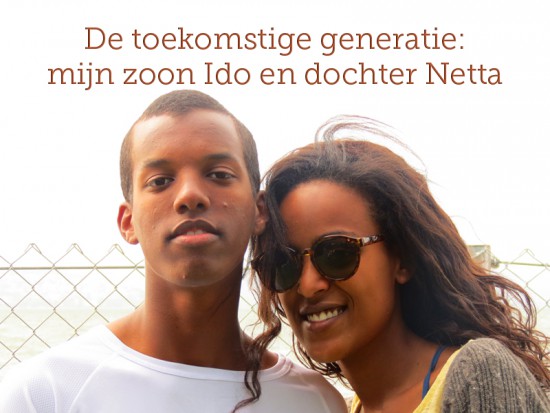

 Follow
Follow




